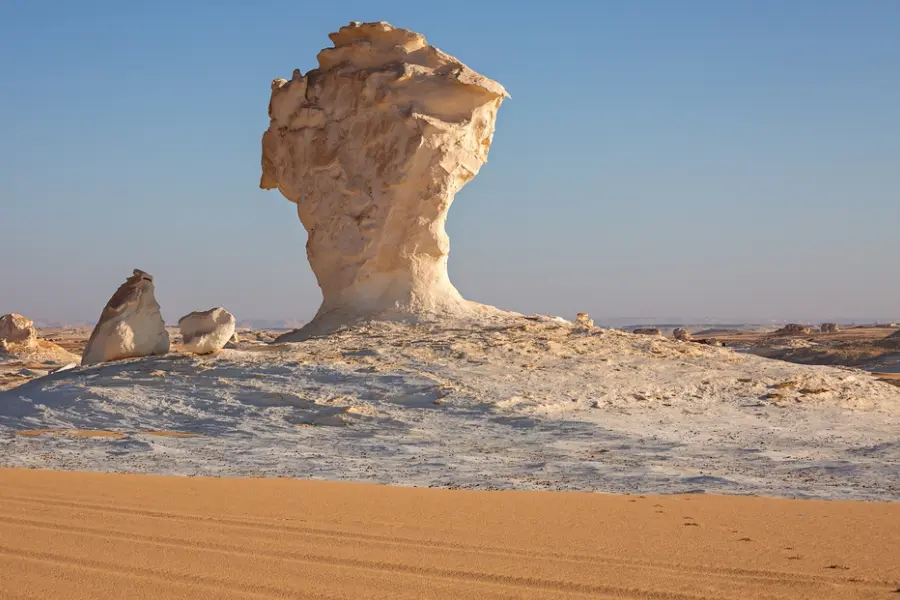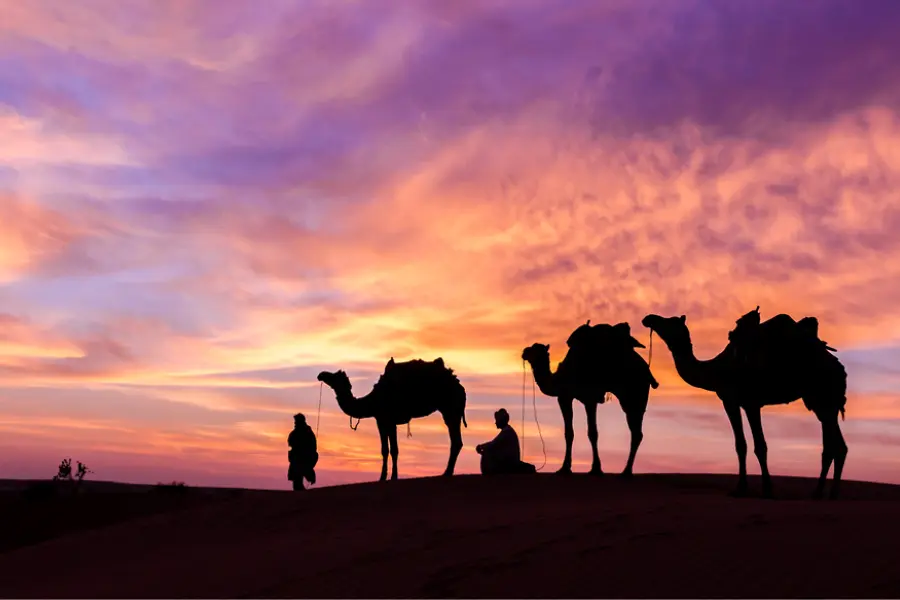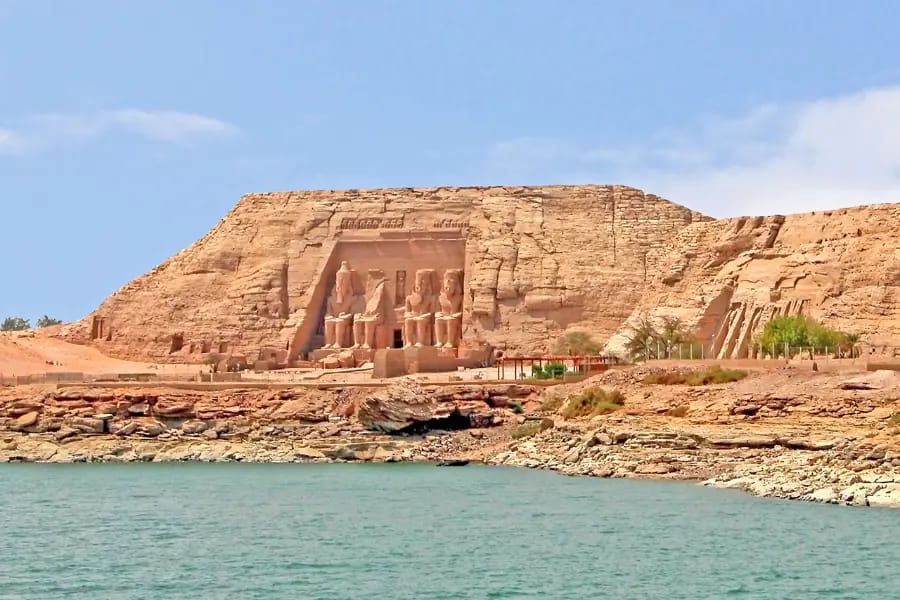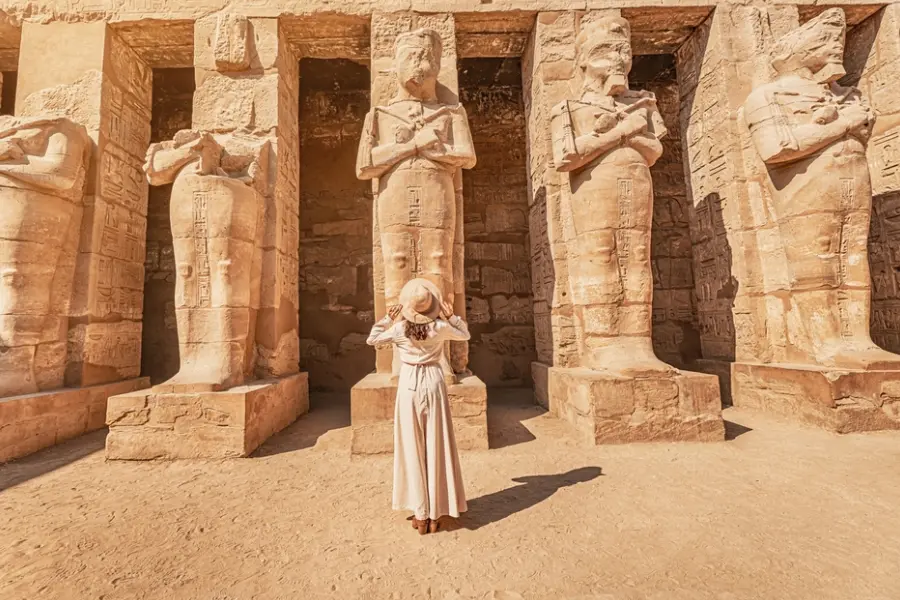Valley of Agabat in Egypt – The White Desert Wonder
Embark on White Desert tours with Egypt Tours Group and uncover the hidden gem of the Western Desert—the breathtaking Valley of Agabat in Egypt, famed for surreal rock formations, golden dunes, and dazzling white cliffs.
Agabat Valley surrounds you with landscapes that look like waves frozen in time, mushroom-shaped rocks, and shimmering sands under an endless sky. Get ready for a journey deep into the Western Desert and the White Desert—a must-stop highlight on any itinerary.
Enjoy peaceful desert vistas filled with rock formations resembling living creatures, dunes that glimmer like waves, clear skies, and refreshing air with Egypt Tours Group.
Key Takeaways
- ✅ The Valley of Agabat is located between Bahariya and Farafra oases.
- ✅ Famous for golden sands, white cliffs, and rock formations like Mushroom & Chicken Rock.
- ✅ Agabat Valley is a Must-stop on White Desert tours, popular for camping.
- ✅ Best time: September–February (cooler weather & clearer skies).
- ✅ Great for photography at blue hour, sunrise, and the golden hour.
Where is the Valley of Agabat?
Valley of Agabat lies in the heart of the Western Desert in Egypt, south of the Farafra Oasis and between the oases of Farafra and Bahariya. It is one of the most remarkable natural landscapes, remaining largely untouched by human hands. With Egypt Tours Group, you’ll discover the exact location of Agabat Valley and learn the best ways to reach this breathtaking destination.
- It is considered part of the unique and precious White Desert reserves, which attract visitors from all over the world to marvel at its beauty.
- As an amazing natural site, the valley is also considered an entrance to the White Desert (from the direction of the Bahariya Oasis).
- Agabat Valley is about 40–50 km away from the Bahariya Oasis.
- It is preferable to go with four-wheel-drive vehicles in these desert areas, as they will make the journey easier.
The Breathtaking Landscapes of Agabat Valley
Agabat Valley is one of the most striking natural areas in Egypt’s Western Desert, where golden dunes meet towering white cliffs to create a surreal landscape. This section explores the valley’s iconic features, from its golden sands to its world-famous rock formations, and why it remains a highlight of every White Desert adventure.
Golden Sands and White Cliffs
The golden sands stretch from Agabat Valley to the beginning of the White Desert, forming a natural corridor of breathtaking beauty. Their soft texture gives a glowing sheen to the golden color, while the rolling dunes resemble waves frozen in time.
The striking white cliffs rise dramatically into the White Desert itself. Shaped by geological forces and desert winds, some formations appear like mushrooms, birds, or even human figures. Their shades shift subtly depending on the time of day, offering endless inspiration for photographers.
Famous Rock Formations
Over millions of years, wind and sand have carved rock formations that continue to amaze visitors. Among the most famous are the Chicken Rock, Mushroom Rock, and Camel Rock—each resembling figures from everyday life. Other striking shapes include Eagle Rock and Ship Rock, all of which stand as natural sculptures in the heart of the Western Desert.
These unique formations not only provide stunning photo opportunities, especially at sunrise and sunset, but also tell the story of nature’s artistry across time, making Agabat Valley unlike any other desert landscape in Egypt.
Visiting Agabat Valley in Egypt
The Valley of Agabat is considered one of the most important stops on White Desert trips, thanks to its breathtaking natural scenery and unique location.
Stopover on White Desert Adventures
Prepare yourself for one of the most extraordinary deserts ever. The Valley of Agabat is not only visually stunning but also a strategic stopover for travelers heading deeper into the White Desert.
- The Valley of Agabat is an essential stop on White Desert trips.
- Its location between the Bahariya and Farafra oases makes it a key point for explorers and tour operators.
- It is famous for its rock formations, white hills, and golden sands all in one place.
- Camping is popular here, offering a serene desert experience between visits.
- Easily accessible from the Bahariya Oasis—less than an hour by 4×4 vehicle.
Combine with Nearby Attractions
- Combine your visit with other top attractions in the Western Desert.
- The Valley of Agabat is usually included with trips to the White Desert, Bahariya Oasis, Crystal Mountain, and the Black Desert.
- In just one day, you can experience several different natural environments.
- See the white cliffs, volcanic formations, and crystal landscapes all together.
- This combination makes your Egypt desert trip richer and more unforgettable.
Best Time to Visit Agabat Valley
The best time to travel to Egypt, including visiting the Valley of Agabat, is during the cooler months from October to April. The weather is mild and pleasant, making desert trips and outdoor activities much more enjoyable.
- Autumn and winter are excellent seasons for visiting the Western Desert in Egypt.
- Daytime weather is moderate, not too hot and not too cold, with refreshing coolness at night.
- Nights are ideal for camping, enjoying Bedouin dinners, or sitting around the fire under the stars.
- The cooler weather makes photography easier and the skies clearer for stargazing and sightseeing.
- You can enjoy all desert activities comfortably without fatigue from the summer heat.
- From September to February are the very best times to visit the Valley of Agabat, Egypt.
Photography Tips for the Valley of Agabat
Don’t miss the golden opportunity to take pictures and capture your memories in the Valley of Agabat, Egypt. Here are some little tips that will make your photos flourish.
- Start shooting during the blue hour, the hour before sunrise, as it adds special touches and distinctive lighting to the natural scenery. Cover the camera or bring lens cleaning supplies to prevent sand or dust from affecting it.
- Take advantage of the sunrise and capture photos facing it.
- Use a wide lens to capture everything.
- Also, focus on the last hour before sunset, which is known as the golden hour.
- Remember to take pictures with rocks that look like living things, such as the Mushroom Rock.
- Footprints in the sand or shadows in photos and videos can add an attractive and captivating human element.
Frequently Asked Questions about Valley of Agabat
How far is Agabat Valley from Bahariya Oasis?
The trip takes about an hour by four-wheel drive vehicle, and the distance is about 50 kilometers.
Is camping allowed in Agabat Valley?
Of course! The valley is considered one of the most famous camping places in the desert, especially in the winter.
What’s the best way to reach Agabat Valley?
The best way is a four-wheel drive vehicle, and with a person from the desert to guide you on the road because of its difficulty.
What is the best time to visit Agabat Valley?
The best time to visit is from September to February, when the weather is cooler and more suitable for desert activities and camping.
Can Agabat Valley be visited along with other attractions?
Yes, it is usually combined with visits to the White Desert, Crystal Mountain, the Black Desert, and Bahariya Oasis on the same trip, making the experience richer and more enjoyable.
Conclusion
Ready for an unforgettable adventure? With Egypt Tours Group, you can explore the magic of the Valley of Agabat, Egypt, through our exclusive tour packages. Combine this breathtaking Western Desert experience with visits to Egypt’s top cities and historical landmarks—such as Cairo, Luxor, Aswan, and the Red Sea—for a journey that truly captures the best of Egypt.







